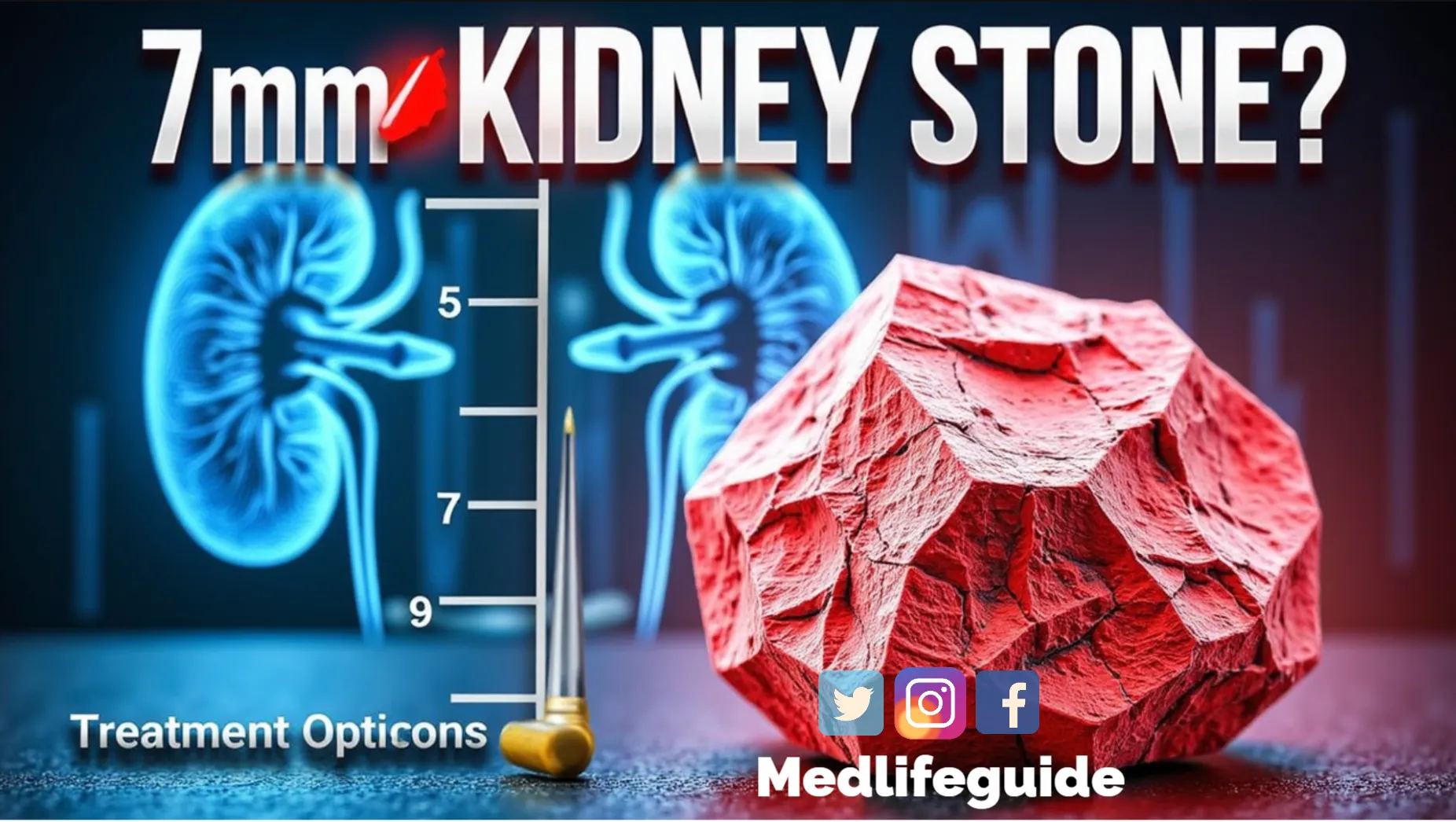What Are Your Options When Facing a 7mm Kidney Stone? Let’s Talk.
Let’s be real—kidney stones are no joke. If you’ve ever had one (or you’re currently dealing with the beast that is a 7mm stone), you know it’s not just “a little discomfort.” It can stop you in your tracks. So if you’re wondering what your treatment options are for a kidney stone of this size, you’re not alone—and I’m glad you’re here.
So… Can a 7mm Stone Pass on Its Own?
That’s one of the first questions people ask, and rightly so. I mean, who wants a medical procedure if there’s a chance you could let nature take its course?
In my experience—and from what urologists often say—a 7mm stone is kind of on the fence. It’s too large to pass easily in most cases, but not impossible. It depends on a few factors: where it’s located, how much pain you’re in, and how your body is reacting overall.
👉 Ask yourself: “Am I in severe pain or showing signs of infection?” If the answer is yes, don’t wait. Get to a doctor ASAP.
When Water Isn’t Enough
Many people try increasing their fluid intake, hoping to flush it out. And while staying hydrated is essential, for a 7mm stone, drinking tons of water probably won’t be enough. Think of it like trying to push a golf ball through a straw. Yeah—not happening without some help.
Meanwhile, medications like alpha-blockers (e.g., tamsulosin) might be prescribed to help relax the muscles in your ureter, giving that stone a better chance of moving. These meds don’t work overnight, but they can buy time and maybe even help you avoid surgery.
Medical Treatments That Might Be on the Table
Let’s dive into the more targeted treatment options—especially for those stones that aren’t budging.
- Extracorporeal Shock Wave Lithotripsy (ESWL)
Think of this as breaking the stone into pieces with sound waves—non-invasive and usually outpatient. However, it works best when the stone is located in the kidney or upper ureter, and not too dense. We’ve helped patients who passed small fragments with relief after this. - Ureteroscopy (URS)
This one’s a bit more hands-on. A thin scope is passed through your urethra to the stone’s location. The stone can be broken up using a laser and removed. It sounds intimidating, but it’s actually quite common and recovery is usually quick. - Percutaneous Nephrolithotomy (PCNL)
This is reserved for very large stones or complicated cases. It’s a surgical procedure where the stone is removed through a small incision in the back. Definitely not first-line for a 7mm stone, but worth knowing about if other options fail.
A Patient’s Perspective: Real Talk
One of our readers once described having a 7mm kidney stone as “worse than childbirth”—and she had twins. It’s scary, it’s painful, and the uncertainty can be just as overwhelming as the physical symptoms. That’s why understanding your options, and knowing what to expect, can bring a sense of control back into the picture.
What Should You Do Right Now?
If you’re sitting at home, clutching your side, hoping that lemon water and pain meds will be enough, pause for a moment and check in with yourself:
- Has your pain lasted more than a few days?
- Are you feeling feverish or nauseated?
- Have you stopped passing urine or noticed blood?
If any of these sound familiar, call your doctor. No shame in seeking help.
Final Thoughts: Be Your Own Advocate
Every body is different. What worked for someone else may not be your path—and that’s okay. But being informed, asking questions, and not ignoring symptoms is half the battle. You deserve care that’s tailored to you.
And remember: just because the stone is small enough to have a number attached (7mm), doesn’t mean it’s small to you. It’s your pain, your body, your choice. So ask questions. Be persistent. You’ve got this.
📚 Trusted Sources:
📌 Disclaimer: This post is for informational purposes only and is not a substitute for professional medical advice. Always consult your healthcare provider for diagnosis and treatment tailored to your needs.
Frequently Asked Questions FAQs
No—medical or surgical intervention is typically required.
Mild discomfort occurs, but sedation is used during the procedure.
Most treatments (e.g., URS) are outpatient; PCNL may require 1–2 days.
Yes—lifestyle changes reduce risk by 50%.
Conclusion
A 7mm kidney stone demands prompt treatment to prevent complications. Options like ESWL, ureteroscopy, or PCNL offer high success rates when tailored to the stone’s location and patient health. Always consult a board-certified urologist to create a personalized plan. By combining advanced treatments with preventive strategies, patients can achieve lasting relief and improved kidney health.

